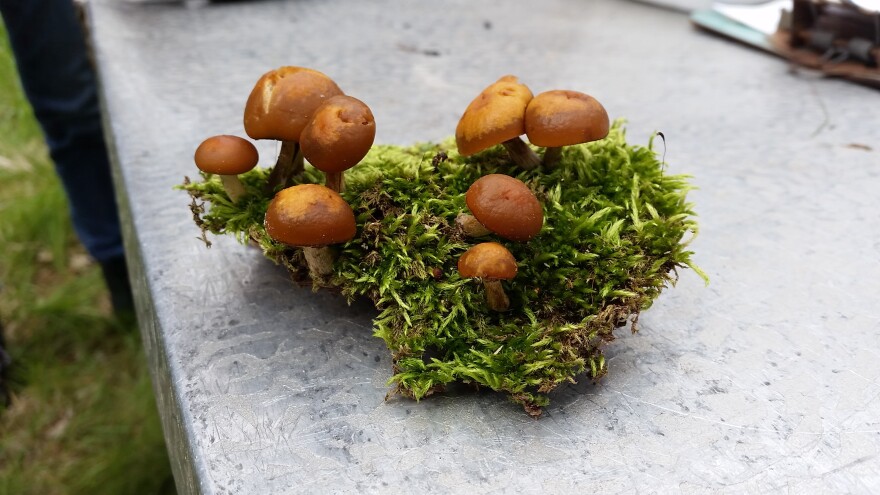For nature lovers, morels offer a great reason shake off winter cabin fever.
Take a trip out to the Housatonic River Valley over the next few days, and if you’re lucky, you might spot a peculiar-looking fungus that’s a tasty trophy for mushroom hunters.
Our hunt for morels -- pitted fungi that look a bit like brains perched on stalks -- began by looking up at trees.
"So look, ash. Ash. These are all potential morel sites," said Bill Yule from the Connecticut Valley Mycological Society.
We hunted in a forest up near Kent Falls. As we broke trail and emerged into a lush grotto, Yule picked out the tell-tale cross-hatch pattern on the bark of a distant ash tree.
"There’s a much better possibility we'll find the morel right here around the perimeter of sort of the base of the ash tree then if we just walk randomly," Yule said.
Trees are the pointers for finding morels, according to Yule. The mushrooms have a relationship with trees underground, he said, and it's not just ash. Tulip poplars, apple trees, and dying elms can all be indicators of potential morel spots.
At this location, we didn't have any luck finding morels, but Yule was prepared if we did. He held a flat basket, and inside was an egg carton to keep his mushroom samples separated.
"I bring a small saw, in case I want to cut a piece of wood off and harvest that wood," Yule said. "I bring an old, cheap knife for digging underneath the mushroom."
People come to mushroom hunting for lots of different reasons. For Yule, it was a love of nature. He said others are passionate about identifying and distinguishing mushrooms.
YanliJiang was hiking with us. She’s a mushroom hunter from China who lives today in Avon -- and said her entry into the world of mushrooms began with an interest in cooking. "In China, the ingredient variety is very broad," she said, "compared to what I can find here from a couple of Asian grocery stores in the town."
Morels are prized among cooks. Add some butter, a little salt, pop them in a frying pan -- and their meaty flavors become delicious.
As we hiked, part of the reason Yule and I weren't up to our necks in old deadwood was thanks to fungi that decompose wood, like the shelf mushroom.
"Latin name: Ischnodermaresinosum," Yule said.

We joked that it sounds like a spell from Harry Potter, but the names are fun.
"This is called turkey tail mushroom," Yule said. It looked like a fanned turkey tail. There are Dirty Tricks, Fairy Pins, and a whole host of names for morels, too: sponges, yellows, grays, and browns.
There are also names both descriptive and practical, like Destroying Angel, a group of white mushrooms that look placid, but can kill you if eaten.
"And the most deadly mushroom that we know of anywhere is called the Death Cap mushroom," Yule said. "That’s another Amanita. And then there’s a little brown mushroom that’s deadly -- we call it the Deadly Galerina."
Yule said all three are in Connecticut, which is why it’s important mushroom hunters follow some basic rules.
"When in doubt, throw it out," he said. "Don’t feed 'em to old people. Don’t eat anything you haven’t positively identified with someone who is experienced."

We casted about for a bit longer, bouncing from tree to tree, scanning the ground for morels. But no luck.
So we did what Yule said his group does at the end of most forays: headed out of the forest to a nearby makeshift camp where mushroom hunters have set up a table.
On the table were piles of dumped-out mushrooms. Hunters sorted through them, identifying what people have picked up.
After a few minutes of sorting, Andrew Karwowski appeared. The crowd started talking. He found morels, and triumphantly dumped a few onto the table.

He said they’re from Mohawk Mountain -- but good luck getting any more details. Mushroom hunters can be secretive about their morel spots.
"I can’t tell you where, because I’d have to kill you," Karwowski joked.
But that secrecy makes the hunt all the more fun.
Morels are some of the first mushrooms to pop up every spring -- and for nature lovers, they offer a great reason to get outside, take in the woods, and shake off winter cabin fever.





